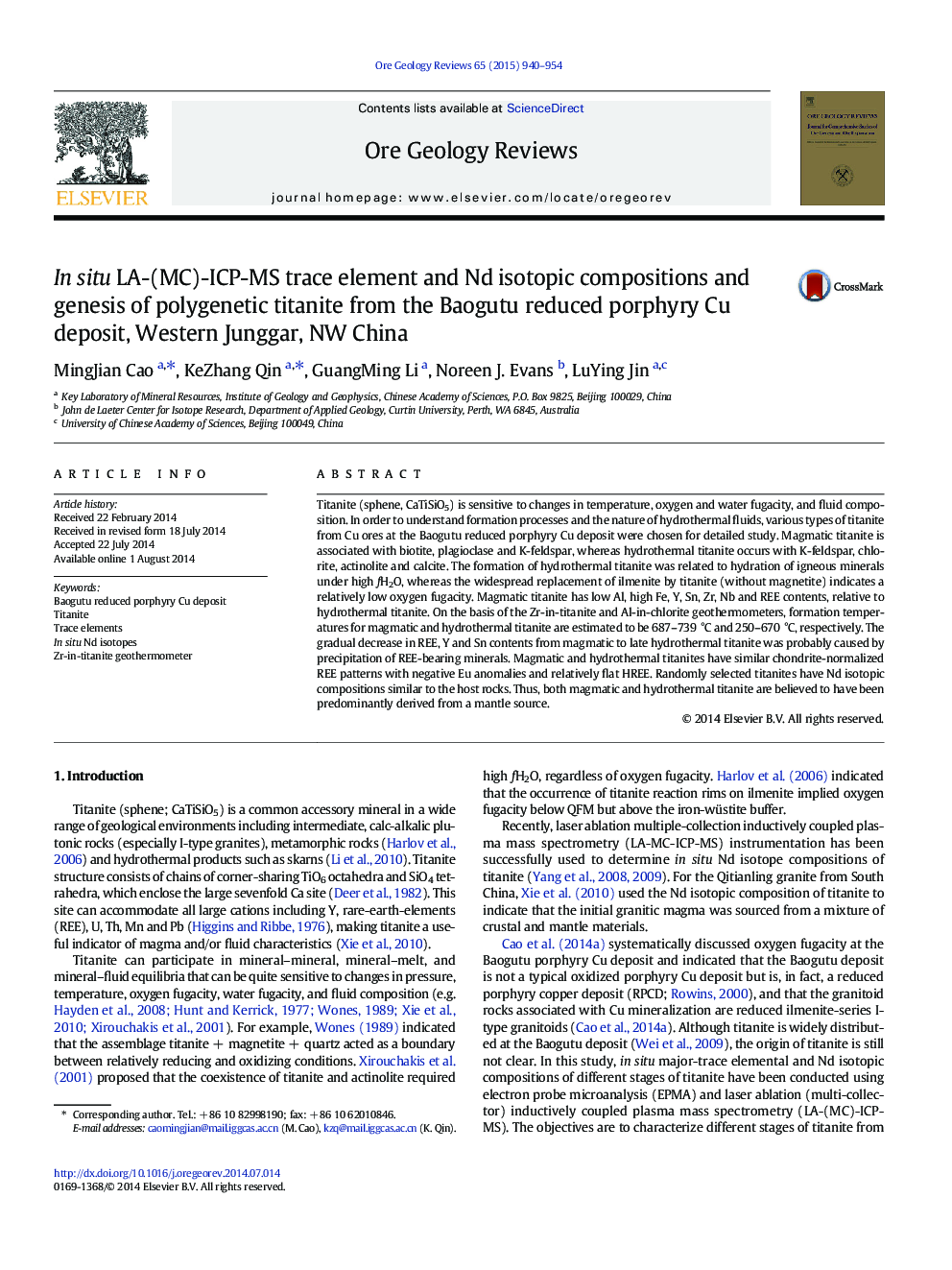| کد مقاله | کد نشریه | سال انتشار | مقاله انگلیسی | نسخه تمام متن |
|---|---|---|---|---|
| 4697153 | 1351864 | 2015 | 15 صفحه PDF | دانلود رایگان |

• Magmatic and hydrothermal titanite is widely developed at the Baogutu deposit.
• Distinct petrological and geochemical features exist between two types of titanite.
• Hydrothermal titanite is formed under high fH2O but low fO2.
• In situ Nd isotope shows a dominant mantle component for analyzed titanite.
Titanite (sphene, CaTiSiO5) is sensitive to changes in temperature, oxygen and water fugacity, and fluid composition. In order to understand formation processes and the nature of hydrothermal fluids, various types of titanite from Cu ores at the Baogutu reduced porphyry Cu deposit were chosen for detailed study. Magmatic titanite is associated with biotite, plagioclase and K-feldspar, whereas hydrothermal titanite occurs with K-feldspar, chlorite, actinolite and calcite. The formation of hydrothermal titanite was related to hydration of igneous minerals under high fH2O, whereas the widespread replacement of ilmenite by titanite (without magnetite) indicates a relatively low oxygen fugacity. Magmatic titanite has low Al, high Fe, Y, Sn, Zr, Nb and REE contents, relative to hydrothermal titanite. On the basis of the Zr-in-titanite and Al-in-chlorite geothermometers, formation temperatures for magmatic and hydrothermal titanite are estimated to be 687–739 °C and 250–670 °C, respectively. The gradual decrease in REE, Y and Sn contents from magmatic to late hydrothermal titanite was probably caused by precipitation of REE-bearing minerals. Magmatic and hydrothermal titanites have similar chondrite-normalized REE patterns with negative Eu anomalies and relatively flat HREE. Randomly selected titanites have Nd isotopic compositions similar to the host rocks. Thus, both magmatic and hydrothermal titanite are believed to have been predominantly derived from a mantle source.
Journal: Ore Geology Reviews - Volume 65, Part 4, March 2015, Pages 940–954